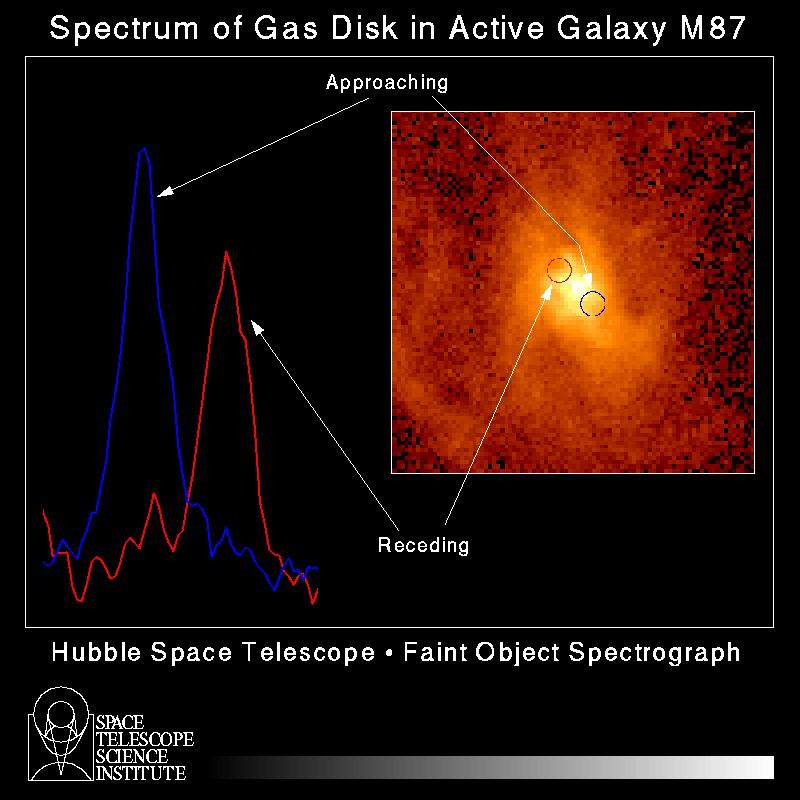What the Hell is that Thing?
Okay, we have a very small but luminous X-ray source at
the
center of the Galaxy. The radio core size is < 20 AU. We also know
that
the Keplerian motion of stars indicate there is a very massive object
there.
But we don't see anything. What is it?
Most likely, a supermassive
black
hole!
Supermassive Black Holes
If the mass of the supermassive black hole (SBH) at the
Galactic
Center is 3.7x106 Msun, what is its Schwarzchild
radius?
Rs = 2GM/c2 = 0.07 AU ~ 14
Rsun
Gas motions around Sgr A*
-
Again, using radio interferometry we can study the
motions
of gas clouds close to Sgr A*. We find gas with very high velocities, ~
800-1000 km/s, streaming away from Sgr A*. It has been suggested that
we
may be seeing the intense radiation field around Sgr A* blowing
gas away from the center.
-
At the same time, from the motions of the molecular
ring,
we see evidence of mass accretion onto Sgr A*
at the rate of 10-3 to 10-2 Msun/yr.
The Monster at the Galactic Center
 The
density of stars in the Galactic center is high, and there is almost
certainly
a supermassive black hole at the center. Imagine a situation where a
star strays to close to the SBH and gets tidally disrupted.
(How close? About an AU or so...)
The
density of stars in the Galactic center is high, and there is almost
certainly
a supermassive black hole at the center. Imagine a situation where a
star strays to close to the SBH and gets tidally disrupted.
(How close? About an AU or so...)
When that happens, a lot of mass will get dumped
suddenly
onto the accretion disk around the black hole. As it falls inwards, it
converts gravitational energy into luminosity (optical, UV,
and X-rays). This heats the surrounding region, ionizing the gas and
blowing
some of it outwards.
Once the star's material has been accreted, the
luminosity
dies down and the black hole sits and waits for its next victim. If
this
happens every 10,000 to 100,000 years, it would account for the
observed
properties of the Galactic Center.
The monster is quiet for now...
Do we see these things in other galaxies?
Yes!
Using
the Hubble Space Telescope, we can study the motions of stars in the
centers
of nearby galaxies, and find that many of them host supermassive black
holes.
Here's evidence for a very massive one (M~109
Msun) in the giant elliptical galaxy M87:

So what would happen if, instead of eating a star
every
100,000 years, the monster had a constant fuel supply -- stuff
continually
falling onto its accretion disk? Stay tuned....
 The
density of stars in the Galactic center is high, and there is almost
certainly
a supermassive black hole at the center. Imagine a situation where a
star strays to close to the SBH and gets tidally disrupted.
(How close? About an AU or so...)
The
density of stars in the Galactic center is high, and there is almost
certainly
a supermassive black hole at the center. Imagine a situation where a
star strays to close to the SBH and gets tidally disrupted.
(How close? About an AU or so...)
